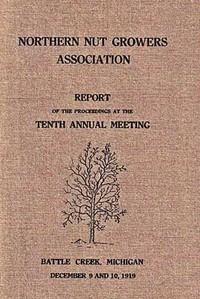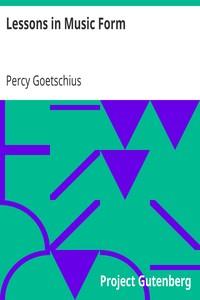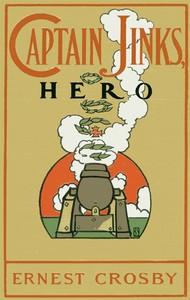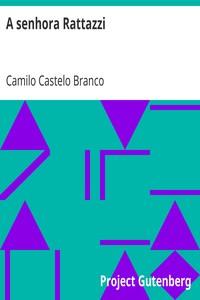|
|
Read this ebook for free! No credit card needed, absolutely nothing to pay.Words: 66802 in 11 pages
This is an ebook sharing website. You can read the uploaded ebooks for free here. No credit cards needed, nothing to pay. If you want to own a digital copy of the ebook, or want to read offline with your favorite ebook-reader, then you can choose to buy and download the ebook.

: Northern Nut Growers Association Report Of The Proceedings At The Tenth Annual Meeting. Battle Creek Michigan December 9 and 10 1919 by Northern Nut Growers Association Editor - Northern Nut Growers Association Periodicals; Nut trees Periodicals; Nuts Per@FreeBooksTue 06 Jun, 2023 it can be digested by the body. During the past few years, it has been found that we must have in our foods a certain amount of substances whose chemical nature is at present unknown and to which the name of vitamines has been given. It is not my purpose to discuss with you the many phases of vitamines and their relation to nutrition, but I only wish to impress upon you the fact that it is of the utmost importance for a dietary to contain these substances; fully as important as that the protein, fat, carbohydrate, and inorganic salt content shall be satisfactory. Lack of these vitamines brings on various evidences of mal-nutrition. One vitamine which is found in animal fats and the leaves of plants and is soluble in, and associated with fats, is, for that reason, called fat soluble vitamine. Another called the water soluble vitamine is widely distributed in cereal seeds, vegetables, and legumes. The third, the so-called antiscorbutic vitamine because of its action as preventative and cure for scurvy, is found in certain fruits and vegetables. We then ask the next question: Are nuts adequate as far as their proteins contain these essential amino acids, and do nuts contain vitamines? That is, is their biological value as satisfactory as their digestibility? Dr. Hoobler of Detroit, in a study of the diets of lactating mothers and wet nurses, a year or so ago, compared the value of proteins from animal and vegetable sources for the elaboration of milk. He found that a mixture of the almond, English walnut, peanut and pecan, furnished proteins that were equal to the animal food tried, and far superior to other vegetable proteins. Here then is evidence that nuts provide the necessary building stones to form milk that food par excellence for the newly born individual. Drs. Mendel and Osborn, experimenting on white rats have shown that the principle proteins of the Brazil nut will maintain animals through the growing period. Bureau of Chemistry workers and others have found similar results with the coconut and the peanut. I have now, experiments underway at New Haven, on the biological value of the filbert, English walnut, pine nut, almond, and pecan. While these tests are yet incompleted, it can at least be said that to date there is no evidence that the proteins of these nuts are in any way less satisfactory than those of the peanut or Brazil nut that have been thoroughly tested out. As to the vitamine content, abundant quantities of water soluble vitamine have been found in the peanut and the coconut. Experiments that we have in progress as well as a series conducted here at Battle Creek under Dr. Kellogg's direction give promise to increase this list of vitamine containing nuts to include at least many of our common nuts. Along with our vegetable oils in general, coconut oil and peanut oil contain insufficient quantities of the fat soluble vitamine to maintain growth in young animals. Whether the other nut oils will prove more efficacious in this respect, is now under investigation. As far as I am aware, the antiscorbutic properties of nuts have not been studied. With the population of the world on a steady increase, it continually becomes necessary for mankind to seek out new sources of food, and utilize products that formerly had received little attention as possible foods. Conditions that disturb normal food production and distribution, such for example as were brought about by the world war, produce serious food shortages in the world, and emphasize how close is the margin that determines whether the peoples of the world have adequate quantities of food or whether they are faced by shortages, and, in many cases, by starvation. In this continual development of our food resources, nuts stand out prominently as offering possibilities which are very great. Not only do they represent a very concentrated form of food which is highly digestible, but they possess a number of characteristic and highly pleasing flavors that recommends them for use in all manner of culinary procedures. The variety of uses to which nuts can be put in the kitchen is amply demonstrated right here in Dr. Kellogg's sanitarium and I feel sure that even he has not exhausted the possibilities of nuts in the dietary. The forms of nut products on the market are steadily increasing. The nut butters, nut pastes, nut margarines, meat substitutes, and so forth, all point to the variety of ways that nuts can be handled as foods. The tremendous increase in the use of nut oils in the form of the oil itself and as nut margarines within the last few years is a striking example of the utilization on a large scale of relatively new food products. The press cake which remains as a by-product of this oil industry finds ready use as concentrates for cattle feeds. Many of our ideas in the feeding of our domestic animals are undergoing development along with the idea of human nutrition. Just recently, investigators at the Wisconsin Experiment Station, reported that the well known "home grown ration" for dairy cows that consist of cereals, silage and hay, is not a large milk producing diet. Their recommendation is to supplement this ration with protein concentrates. Nut meals recommend themselves most highly as protein concentrates. It certainly is safe to say that the day when the fruits of our nut bearing trees will be allowed to fall ungathered from the trees, is at an end. There are many problems that still call for an answer by the chemist and dietitian. The nutritive value of the individual nuts should be firmly established in all its phases. The causes that have made the use of certain nuts unprofitable commercially, should be studied with the view of correcting these stumbling blocks. For example, the freeing of the horse-chestnut from its poisonous saponins and enable us to use this starch rich nut as food is well within the range of possibility as indicated by experiments conducted in Austria during the war. Why do nut oils tend to become rancid easily and can this tendency be remedied? Is the freeing of the acorn and its tannin and other objectionable substances a practical consideration? What is the irritating principle of the English walnut? All these problems and many others wait solution. Research on nuts is in progress in many places. It involves time consuming experiments that are often times expensive. As a result, progress is slow, the amount of research being limited by the financial factor. The value of the pecan nut crop alone of the year 1918, was over 91 million dollars and the value of the imports and exports of nuts and nut products during the same year amounted to over 51 million dollars. If one one-hundredth of one per cent of this sum should be devoted by those interested in the development of our nut industry in this country for the study of the nutritional and chemical properties of nuts, I feel sure that they would be amply repaid for their investment. PRESIDENT REED: I believe this will complete our program for tonight. We have quite a full program for tomorrow morning. Mr. C. A. Reed, nut culturist of the U. S. Department of Agriculture, is with us and was to have been on the program tonight, but he has been busy all day and was hardly ready for tonight's program, as he has been busy getting the exhibit in order, and he will be on the program tomorrow morning, and three or four others, among them Dr Kellogg, I believe, so that there will be quite a full morning's program, and we will be glad to have all of you come who can. We meet in the parlor of the Annex at ten o'clock tomorrow morning. If any one desires to join the Association and will speak to the secretary, he will give yow the necessary information. END OF TUESDAY EVENING SESSION WEDNESDAY, DECEMBER 10, 1919, 10:00 A.M. Free books android app tbrJar TBR JAR Read Free books online gutenberg More posts by @FreeBooks
: Lessons in Music Form A Manual of Analysis of All the Structural Factors and Designs Employed in Musical Composition by Goetschius Percy - Musical form Music@FreeBooksTue 06 Jun, 2023

: Captain Jinks Hero by Crosby Ernest Beard Daniel Carter Illustrator - Didactic fiction; Social problems Fiction; Political fiction@FreeBooksTue 06 Jun, 2023
|
Terms of Use Stock Market News! © gutenberg.org.in2025 All Rights reserved.






